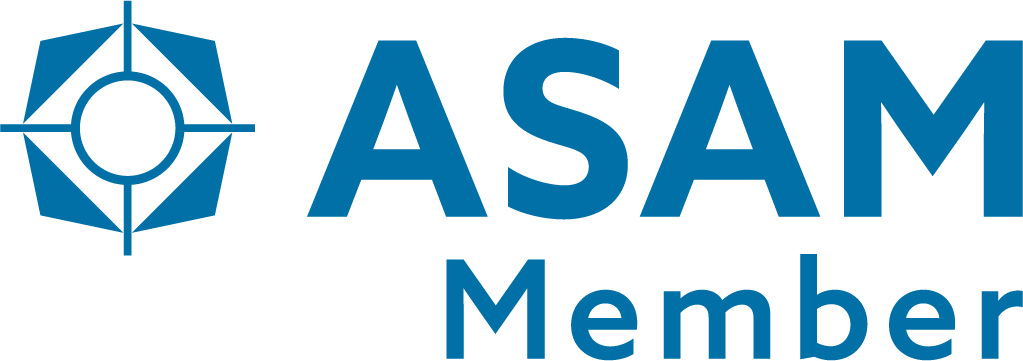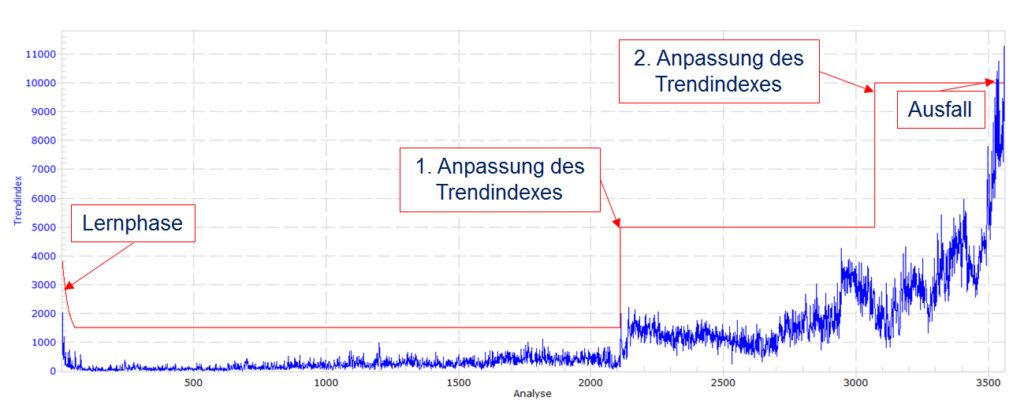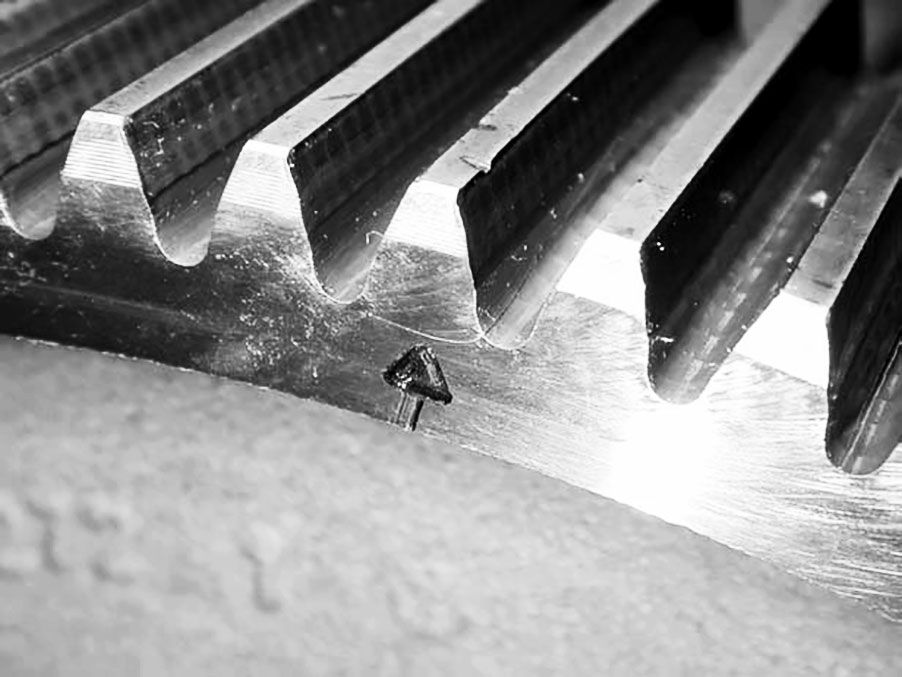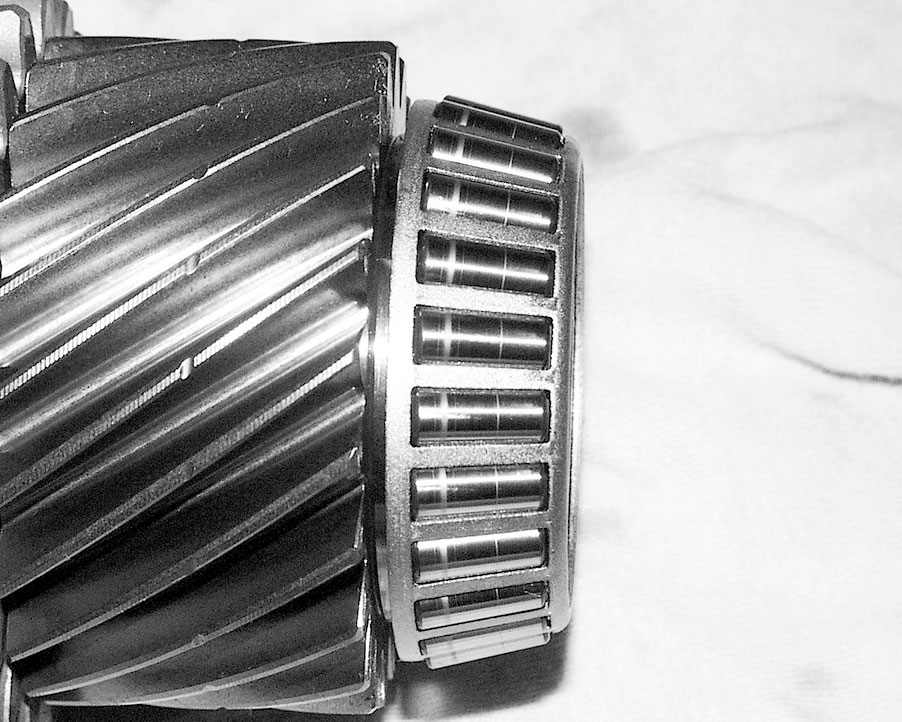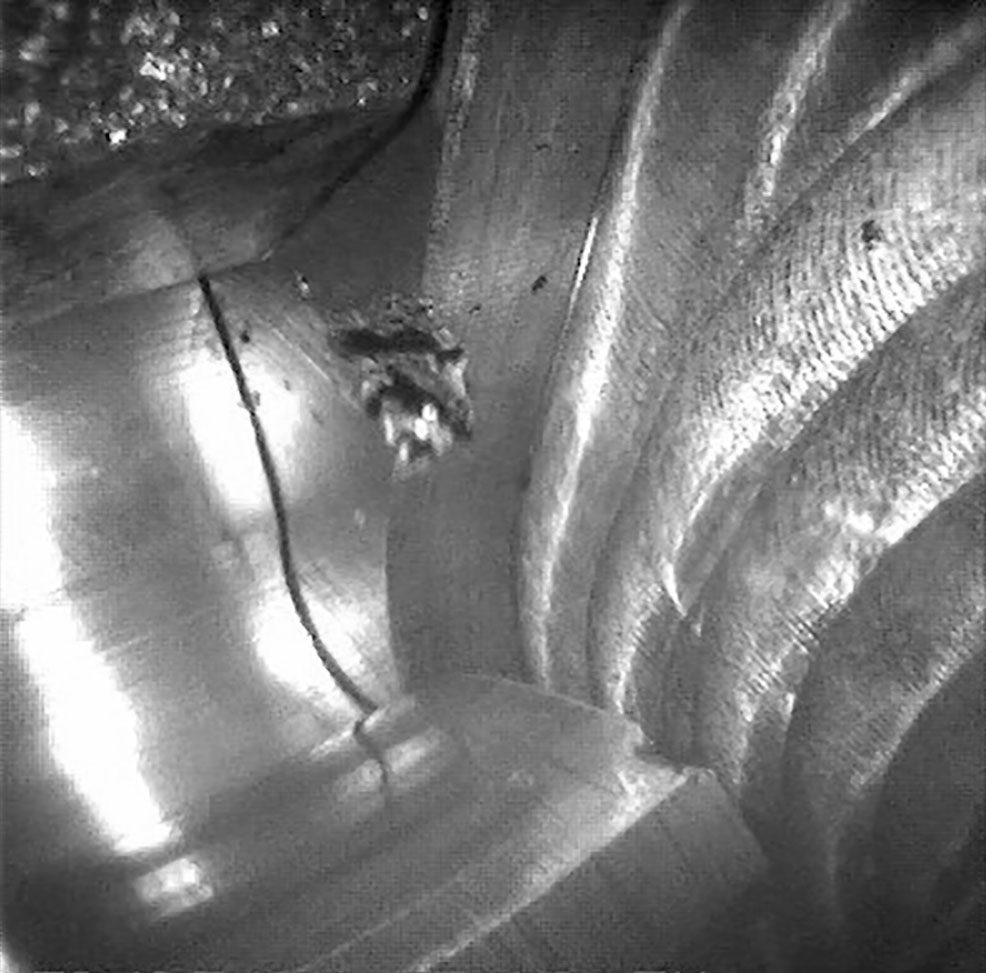Strong. For weak points.
What makes early stage damage detection so important?
Engineered components still require mechanical testing, even in our modern age of computer simulations and additive manufacturing. After all, it is impossible to calculate how a component will actually respond, no matter how many times it is simulated. A meticulous test run is vital to validate a successful design. The process detects and continuously rectifies vulnerabilities.
But how do you detect incipient damage, e.g. to the bearings? Using structure-borne sound. Things would be so simple if a healthy drive was as quiet as a mouse. Just monitoring the aggregate structure-borne sound is not sufficient in this case. The deltaANALYSER diagnosis system is used to separate permitted engine noise from the prohibited sounds of damage. This must take place at a very early stage, namely when the emission accounts for around 1 part per thousand of total noise. Early damage detection is vital so that the deltaANALYSER can identify the weakest component. This means that only the defective part needs to be replaced, without adversely affecting the other components. The method prevents follow-on or complete damage, which would not permit any meaningful conclusion of where the problems actually started. Healthy components can continue the test run based on the mileage they have already completed. Done professionally, early stage damage detection saves precious time and eases the strain on development budgets.
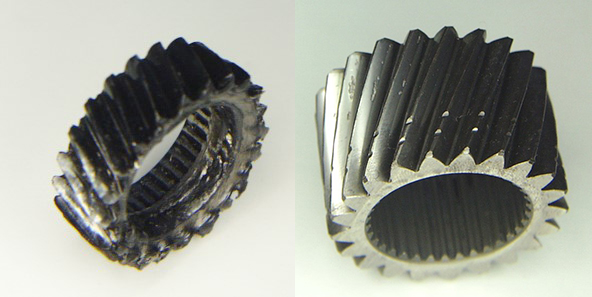
How does early stage damage detection work?
Putting an e-drive system, a motor, transmission unit or individual components through their paces on the test bed will frequently address only the most important parameters such as speed, torque or pressure to determine whether the specimen is working properly. Structure-borne sound is needed to detect damage caused by wear. Here, simple monitoring of the aggregate structure-borne sound is not enough, as the specimen emits noise even in the absence of wear. The deltaANALYSER has the ability to distinguish at an early stage between normal sound emissions and those that indicate damage and hence to identify vulnerabilities in good time. To do this, the deltaANALYSER diagnoses which component is showing incipient signs of damage.
Which measurement methods are available?
One of the most common methods of measuring structure-borne sound is to fit acceleration sensors directly onto the specimen. Bolting the sensors in place yields the best results. Magnetic attachment or sticking them on with adhesive are alternative installation methods. We advise against applying the sensors by force or using a spring to hold them in place. Non-contact measurement with a laser vibrometer is another option, but costs considerably more. This method is not used for durability testing due to the greater expense. Microphones are entirely useless for early stage damage detection. They tend to be used only to determine the specimen sound away from the test bed.
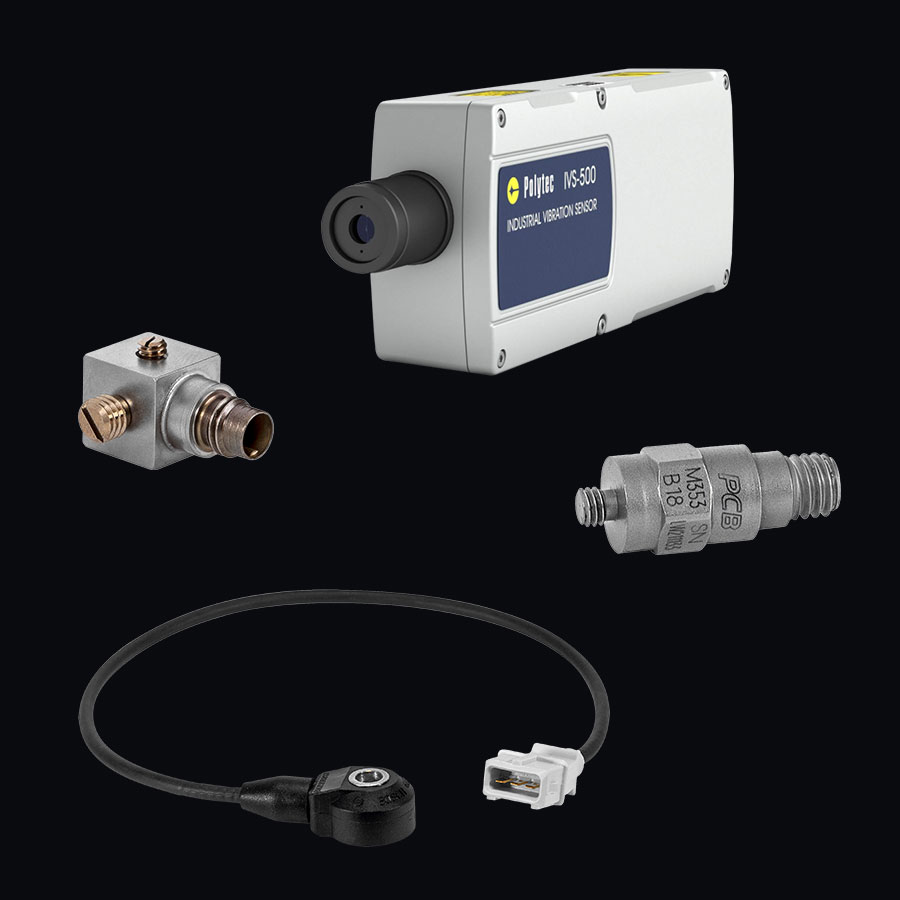
How many structure-borne sound sensors are needed?
Up to eight structure-borne sound sensors can be deployed, depending on the measurement scenario. Usually one sensor is fitted per specimen. For instance, five sensors are needed for a complete powertrain, comprising the combustion engine, transmission, e-motor, transfer case and rear axle. Additional sensors can be fitted to the combustion engine if it has more than five cylinders.
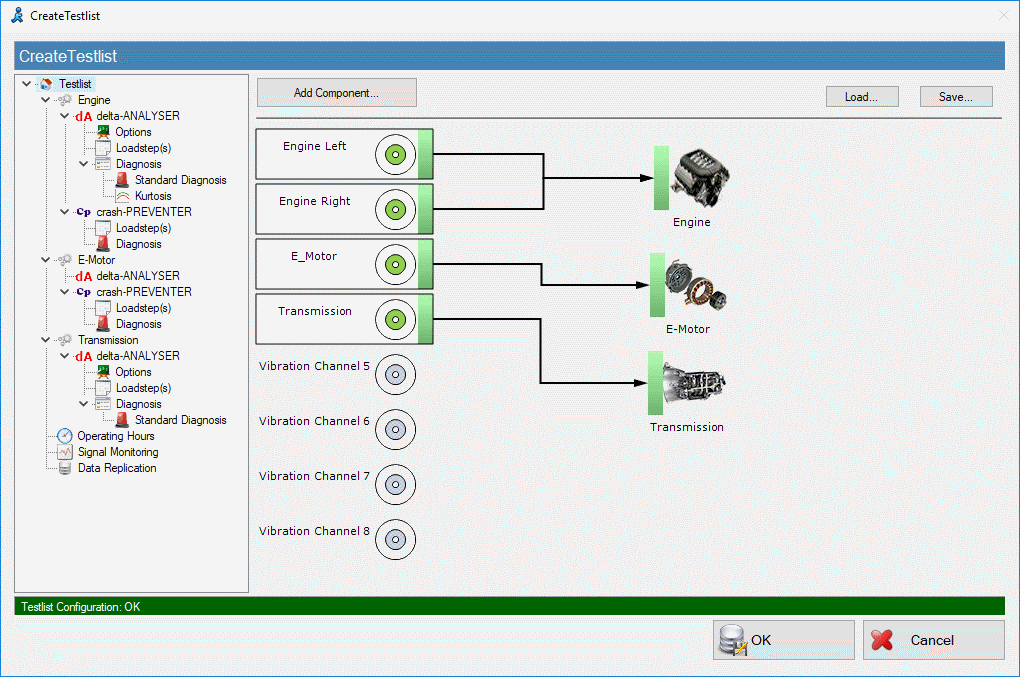
Can different specimens be tested at the same time?
Yes. The individual specimens can be analysed simultaneously when testing the complete powertrain. The monitoring function can be adapted to suit the individual components, ensuring that it is performed both efficiently and thoroughly.
Can the raw data be exported and then processed using an external program?
The deltaANALYSER is able to perform real-time measurement and real-time calculation or real-time measurement with the resampling method. In the resampling method, the raw data is converted into an ASAM AFTX file format if needed, so that downstream calculations can be performed using an external program.
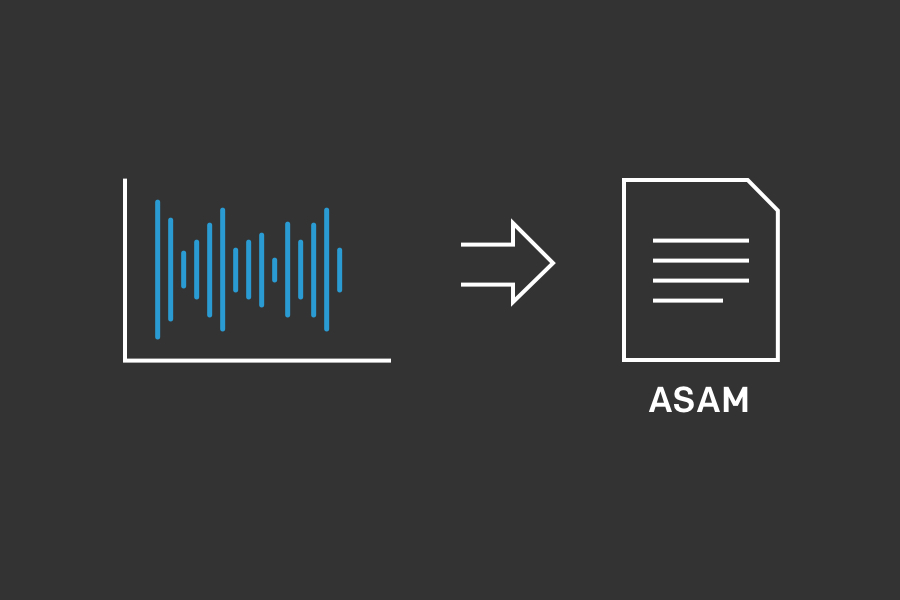
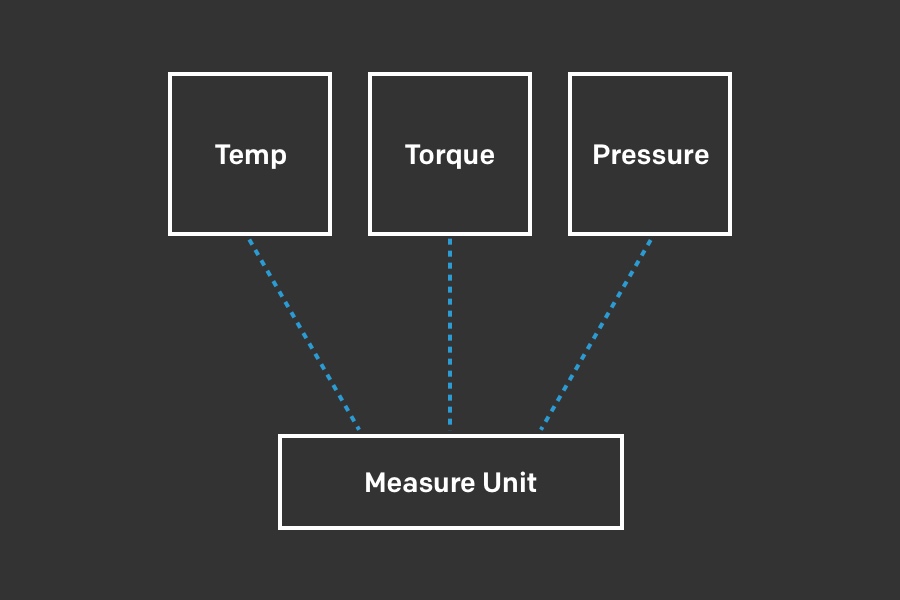
What else is needed to obtain a meaningful measurement?
Besides the structure-borne sound signals, the speed must be obtained to perform an order analysis. The analysis of the specimen’s condition will become increasingly accurate as more signals are added (e.g. torque, pressure, temperature etc.).
Why is an order analysis needed?
Order analysis is the best tool to conduct a structure-borne sound analysis regardless of the speed. The orders will remain where they are, even if the speed varies. Only the amplitude (e.g. m/s² / g / mV) changes. This ensures that narrow tolerances can be defined to visualise even the most negligible variance.
How can we ensure that the speed is precise for order analysis?
The speed needs to be extremely precise to conduct a clean and exact order analysis. To rise to this challenge, the speedBOX is always an integral part of the deltaANALYSER. It has the ability to convert any conceivable signal type into a clean TTL signal. The speedBOX is electrically isolated from the specimen signals transmitted by the test bed to the deltaANALYSER. A variety of configurations are possible. Anything can be managed, from 4-wheel drive to engines. The speedBOX has a second output to service the test bed, additional measurement technology or other equipment.
learn more about the speedBOX
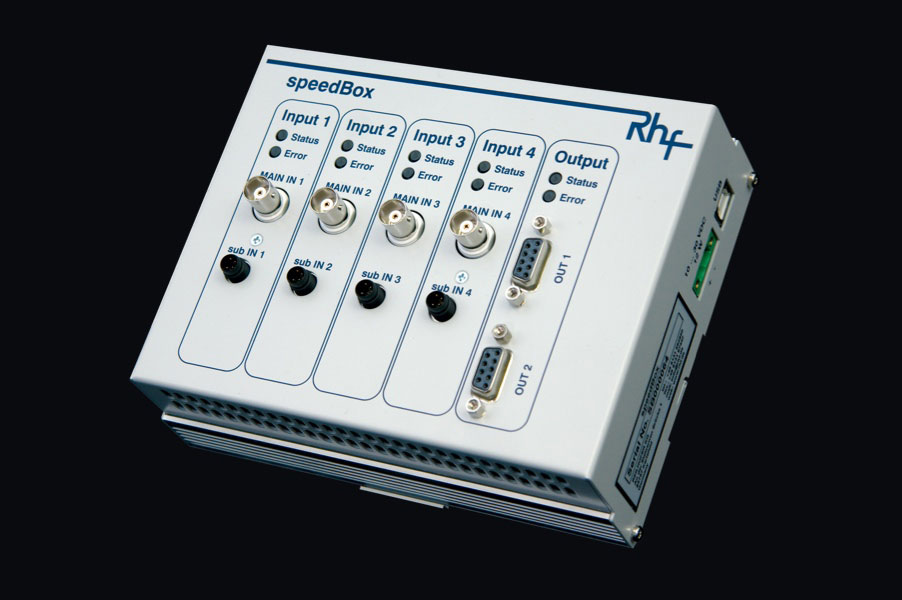
Is one method enough?
No. A variety of methods are needed to detect all faults. Order analysis is only one aspect of early stage damage detection. There are 9 different methods integrated into the deltaANALYSER that are based on structure-borne noise. In some cases, different methods will be used for an e-drive, e-motor or transmission unit as compared to a combustion engine. For instance, performing a 720° analysis only makes sense for an engine.

Something has changed in the specimen, what now?
Specimen changes will manifest over the course of the durability test. These changes are visible in the order range. Reilhofer KG programmed the unique Reilhofer Order Calculator (ROC) to enable component classification. This program enables the rapid and schematic modelling of specimens. The ROC is able to model all conceivable powertrains in no time at all and then calculate the orders associated with the structure-borne sound. Here, the ROC caters to classic transmission units, engines, e-drives and complete powertrains.
learn more about the ROC
How does component classification take place?
Once it has been created, the ROC model is transmitted over for analysis. The changes and the component calculation are visualised in the waterfall chart, the change spectrum over time. This makes it possible to identify the defective component during the test run so that it can be replaced in good time.
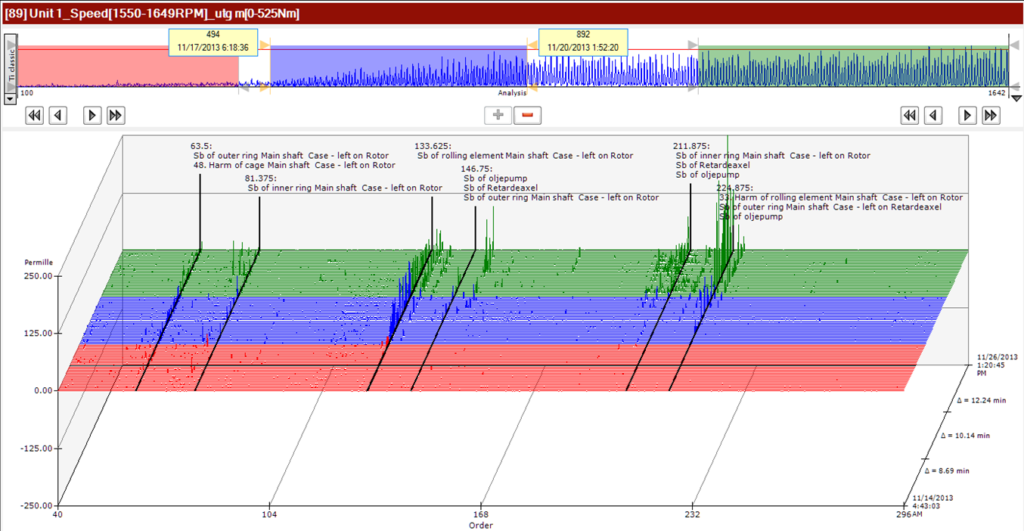
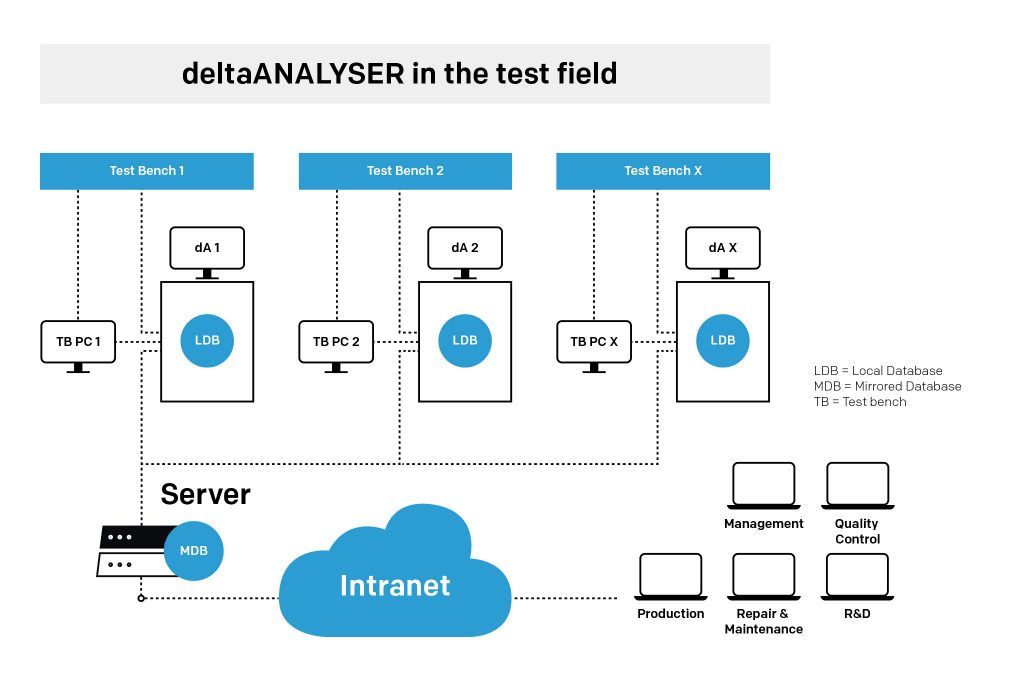
Does an employee need to physically remain at the test bed for data analysis?
No. The deltaANALYSER uses a network connection to mirror the stored data to a server, which enables online data analysis at an office workstation. Server-side storage has the additional advantage that the data is backed up at a location other than the measuring device.
What happens if something breaks without warning?
The CrashPREVENTER is an integral part of the deltaANALYSER. This analysis tool monitors the aggregate structure-borne sound to detect spontaneous breaks or cracks (e.g. cracks in the control chain) so that a signal can be sent immediately to the test bed to shut down the system. The CrashPREVENTER visualises the complete test run in a diagram that shows not only the aggregate structure-borne sound, but also all signals received by the deltaANALYSER.
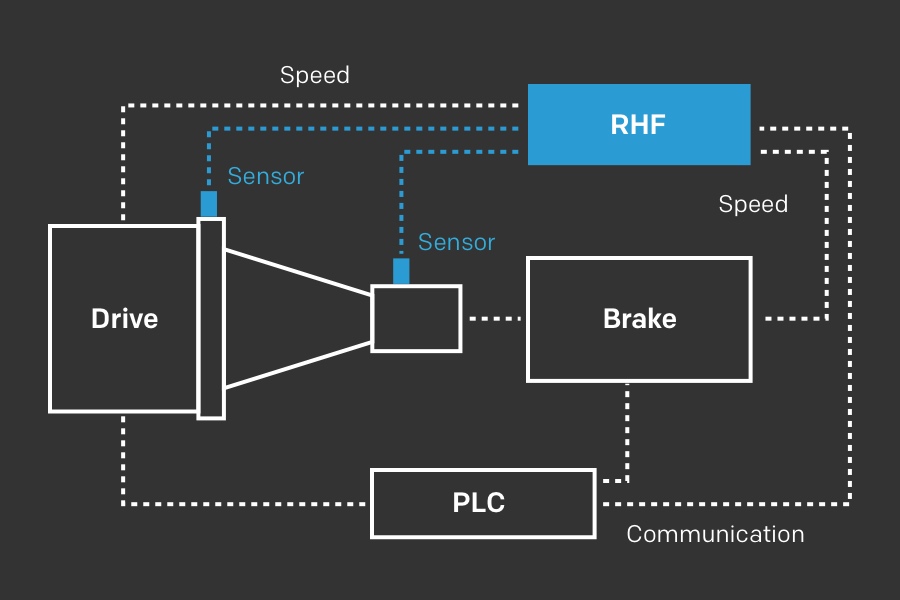
How does integration take place at the test bed?
The deltaANALYSER is easy to integrate into existing test beds. A variety of bus systems can be used for communication between the PST and the deltaANALYSER (e.g. ProfiBUS, CAN, ProfiNET, Ethercat, ModBUS). Older test beds that do not have a bus port can be connected using analogue or digital lines. The structure-borne sound sensor is connected directly using a supplied cable. The measuring unit and the industrial PC are 19-inch modules that can be fitted in available racks. Alternatively, we provide a mobile rack to house the modules.
Use case: tooth root fracture in a transmission unit
Use case: bearing damage in the e-drive
Use case: damage to the oil pump in a combustion engine
Perfect advice.
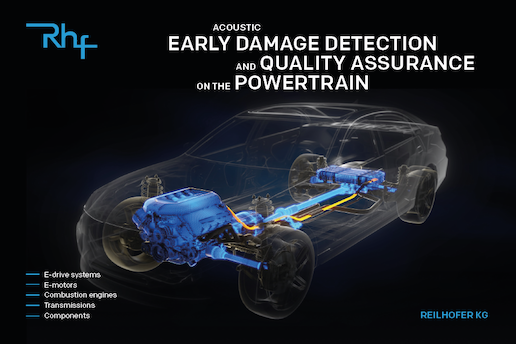
Brochures
Download the deltaANALYSER brochure to learn more about its capabilities in detail.
Download PDF
Open in your browser
Certified quality: ISO 9001
Assured quality through optimised process management based on ISO 9001:2015 certification. The benefit: perfect product and service quality from day one.
learn more
Standardised export formats
